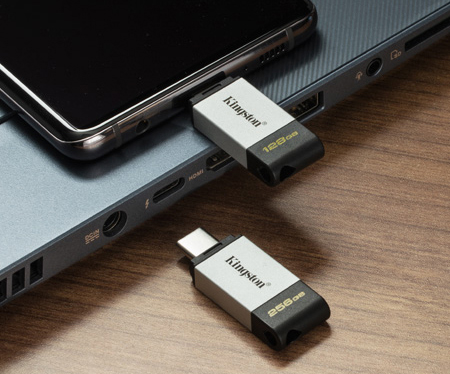The USB standards and their specifications can be a little challenging to understand, especially after their many updates. We’ll examine the difference between USB 3.1 Gen 1 and Gen 2, and talk about why Gen 2 is better than Gen 1, as well as providing other helpful information that will allow you to understand everything you need to know about USB standards.
USB 3.0 was released over ten years ago in 2008 and it was the third major revision to the USB standard. It was a big improvement from USB 2.0 which first arrived in 2000 with transfer speeds of only 480 Mbit/s. Since then, we’ve moved on from USB 3.0 which is now known as USB 3.1 Gen 1. Therefore, USB 3.0 is the same thing as USB 3.1 Gen 1.
USB-IF, the organisation responsible for maintaining USB (Universal Serial Bus) specifications and compliance, did this to make it easier for developers and manufacturers to have the same relevant information, to help ensure products are properly developed to be backwards compatible. This organisation is responsible for the naming conventions found on USB cables and devices.
USB 3.1 Gen 1 vs USB 3.1 Gen 2
The difference between USB 3.1 Gen 1 and USB 3.1 Gen 2 is only in terms of speed. USB 3.1 Gen 1 supports speeds of up to 5Gbit/s, while USB 3.1 Gen 2 supports speeds of up to 10Gbit/s. The USB-IF originally planned to use a set of different names for USB 3.1 Gen 1 and USB 3.1 Gen 2 for marketing purposes. They wanted to name USB 3.1 Gen 1 “SuperSpeed USB” and and Gen 2 “SuperSpeed USB+”, but the industry never caught on. Often, OEMs will add the speeds of 5Gbps or 10Gbps to their spec tables in order to differentiate between the two USB standards. The rest of the industry simply refers to them as “USB 3.1 Gen 1” or “USB 3.1 Gen 2”.
Arrival of USB 3.2
Since then, USB technology has advanced even further with USB 3.2 arriving in 2017. There are four different variations of USB 3.2 with their own special names and meanings. Four variations of USB 3.2 are:
USB 3.2 | USB 3.2 | USB 3.2 | USB 3.2 | |
| Transfer Speed | 5Gbps | 10Gbps | 10Gbps | 20Gbps |
| Previously Known As | USB 3.1 Gen 1 | -- | USB 3.1 Gen 2 | -- |
| Interface Options | USB-A, USB-C, | USB-C Only | USB-A, USB-C, | USB-C Only |
With the arrival of USB 3.2, the industry-dominant USB-A connection was beginning to be phased out in favour of USB-C. Since USB-C supports higher data transfer speeds and can charge other peripheral devices faster, it has naturally become the main USB connector utilising USB 3.2 Gen 2.
Thunderbolt™ is the brand name of the hardware interface developed by Intel® in collaboration with Apple® and it connects peripheral devices to a computer. Thunderbolt 1 and 2 use the same connector as Mini DisplayPort (MDP), whereas Thunderbolt 3 uses the USB-C connecter.
USB4 is Next

The next advancement in USB technology will be USB4. It will offer 40Gbit/s data transfer speeds, Thunderbolt 3 compatibility and will use only the USB-C connector. USB4 aims to increase bandwidth and is focused on converging the USB-C connector ecosystem and minimising end-user confusion.
Several key designs of the USB4 include:
- Display, data and load/store functionality with the use of a single USB-C connector
- Universally compatible with existing USB and Thunderbolt products
- Define port capabilities for predictable and consistent user experience
- Increase host flexibility to configure bandwidth, power management and other performance-related parameters for system needs
USB came a long way from when it was first introduced and will continue to advance in the future. When it comes to USB 3.1 Gen 1 and Gen 2, the only difference is speed and they're backwards compatible with USB 3.0 and USB 2.0. In the future, with newer generations of USB standards and the arrival of USB-C, there will be even better improvements.


0 Comments